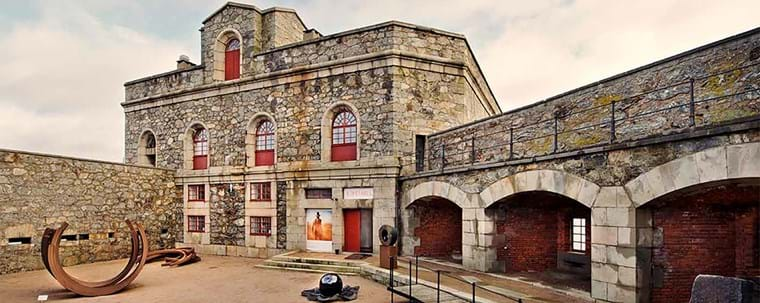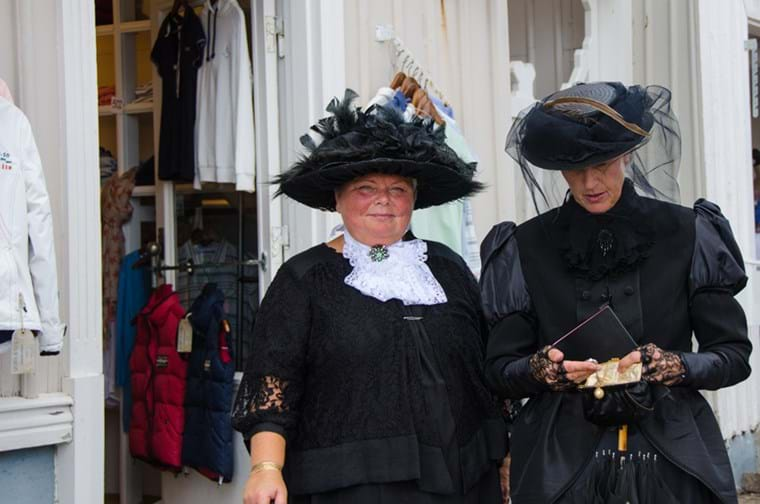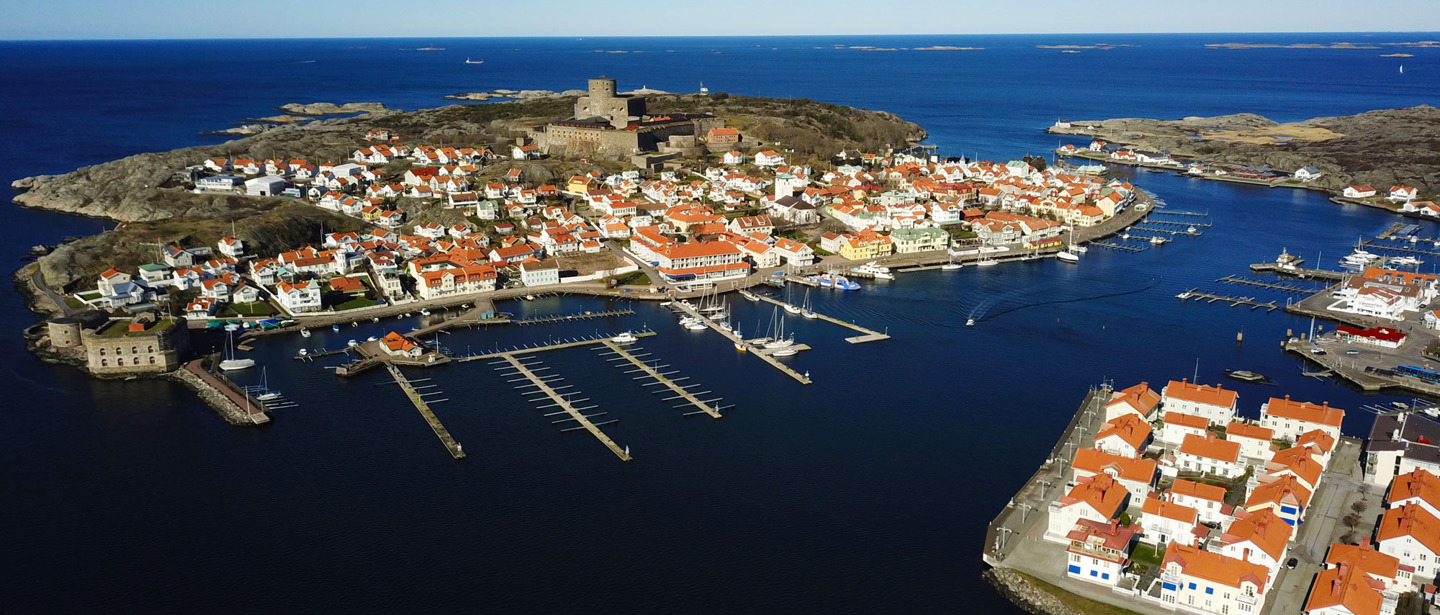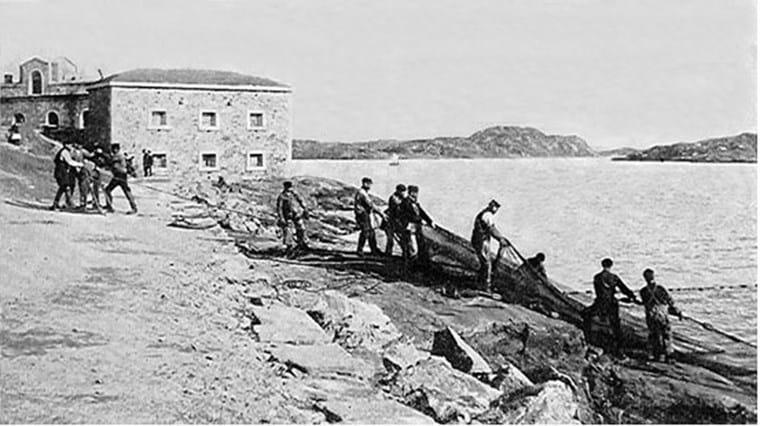Marstrand
A short ferry ride across the strait brings you to the island of Marstrand, with a vibrant presence from the past mixed with trendy sailing jackets. On Marstrand, visitors can find both nightlife and quiet tranquillity depending on when they choose to go. Its cosy block, tiny alleys and nooks, the dominating fortress and ocean views at every turn, stir strong emotions. The jetties of Sweden’s largest guest marina are filled to the brim with boats of all sizes and Match Cup makes Marstrand the sailing capital of Sweden.
Strandverket Konsthall or, Strandverket Art Museum, is housed in an old fort. The art museum showcases mainly photography and sculpture. July also offers fortress games at Carlsten Fortress. Stories and tales from the past, Caroleans, salutes and gate-side drummers add to the spectacle. Visitors to the fortress dungeons will not be surprised to learn that only a fifth of prisoners survived winter. Notorious master thief Lasse-Maja spent 27 years here. At the end of August, the Turn of the Century Days (Sekelskiftesdagarna) turn back time to the days of Oscar II and the turn of the 20th century when Marstrand was a renowned hub for seaside health resorts and social life.


Herring, wealth, wild living, royalty, bathing, entertainments, sailing races. There has always been something to bring visitors to Marstrand. Ever since the Middle Ages Marstrand has exerted a special attraction, and has retained it up to our own days. The town of Marstrand was founded back in the 13th century by the Norwegian king Håkon Håkonsson. Sited way out on the edge of the archipelago, Marstrand was an ideal harbour, often ice-free and with mooring facilities regardless of the wind direction. It was for many years a major fishing centre and the starting point for international maritime trade. Directly to the west lies Skagen in Denmark, and the route from there was regularly followed by the old sailing boats.

Nowadays Marstrand is best known for other kinds of sailing craft. Sailing has grown to be a public sport here, one that can be watched from the only natural sailing arena in the world. In this, the Swedish sailing capital, world famous sailing stars mingle with families out in their boats. But for many centuries it was the herring that made the difference between wealth and poverty. In the 16th century Marstrand was the herring capital of Europe. The street lamps of Paris burned herring oil imported from Marstrand. Employment opportunities brought folk from far and near, and the island became renowned for its immorality. There were more than a hundred taverns on the little island. The island was wealthy enough to build the town hall in stone as they were tired of the many fires they’d suffered. But suddenly the herring ceased to swarm and no more stone buildings were erected.

By the Treaty of Roskilde in 1658 Marstrand passed into Swedish hands, and it was now that the fortress started to be built. In the 18th century the herring returned once more and – to attract labour to Marstrand – the “Porto Franco” was established, meaning a free harbour, paying no taxes, and a refuge for criminals. It was also a place of total religious freedom. The first synagogue in Scandinavia was founded here. But the great herring years once again came to an end and the people of Marstrand were forced to find a new source of income. When sea bathing became the fashion in the 19th century Marstrand began a fresh era of glory. The island attracted the upper classes, eager to mingle with royalty in the newly built Societetshus, Turisthotell and the Marstrand bath house (today’s Båtellet).
The special character of Marstrand where history mixes easily with life, movement, and a crowd of young and old is something you can experience nowhere else.



